
INTRODUCTION TO CHINA
Splendidly diverse in its geographic, ethnic, culinary and social make-up, China is a nation on the march. Developing at a rate unmatched in human history, already huge cities are adding sprawling suburbs and cutting-edge architecture on a day-by-day basis, even as an ever-expanding web of high-speed rail ties the country together. Nevertheless, this apparent modernity is based on a civilization that has remained intact, continually recycling itself, for over four millennia. Chinese script reached perfection during the Han dynasty (220 BC–220 AD), and those stone lions standing sentinel outside sleek new skyscrapers first appeared as temple guardians over three thousand years ago. Indeed, it is the tension and contrasts between change and continuity that make modern China so fascinating.
The first thing that strikes visitors to the country is the extraordinary density of its population. In much of China, villages, towns and cities seem to sprawl endlessly into one another along the grey arteries of busy expressways. Move to the far south or west of the country, however, and the population thins out as it begins to vary: indeed, large areas are inhabited not by the "Chinese", but by scores of distinct ethnic minorities, ranging from animist hill tribes to urban Muslims. Here, the landscape begins to dominate: green paddy fields and misty hilltops in the southwest, the scorched, epic vistas of the old Silk Road in the northwest, and the magisterial mountains of Tibet.
While travel around the country itself is the easiest it has ever been, it would be wrong to pretend that it is an entirely simple matter to penetrate modern China. The main tourist highlights – the Great Wall, the Forbidden City, the Terracotta Army and the Yangzi gorges – are relatively few considering the vast size of the country, and much of China’s historic architecture has been deliberately destroyed in the rush to modernize. Added to this are the frustrations of travelling in a land where few people speak English, the writing system is alien and foreigners are sometimes viewed as exotic objects of intense curiosity – though overall you’ll find that the Chinese, despite a reputation for curtness, are generally hospitable and friendly.

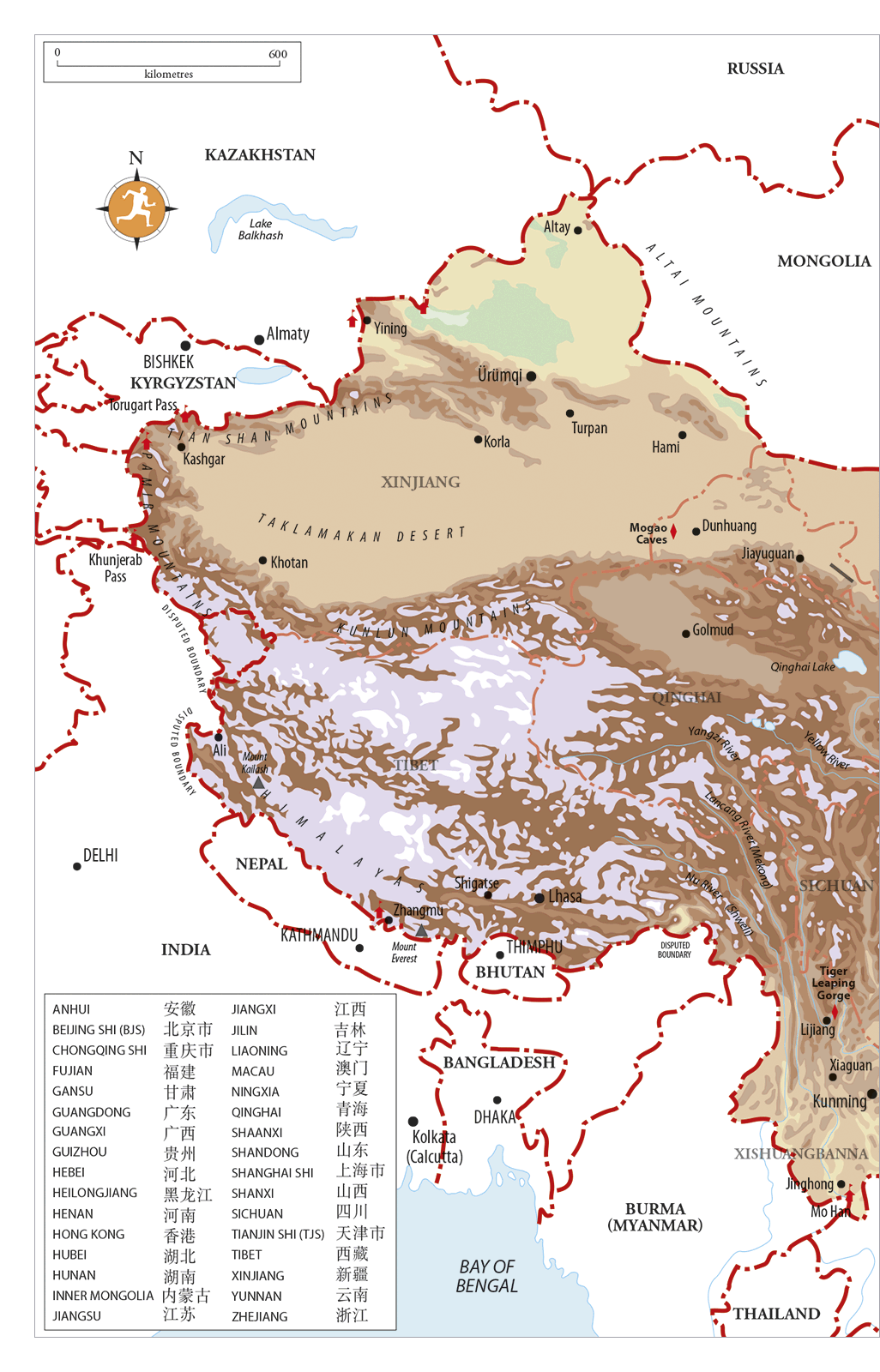
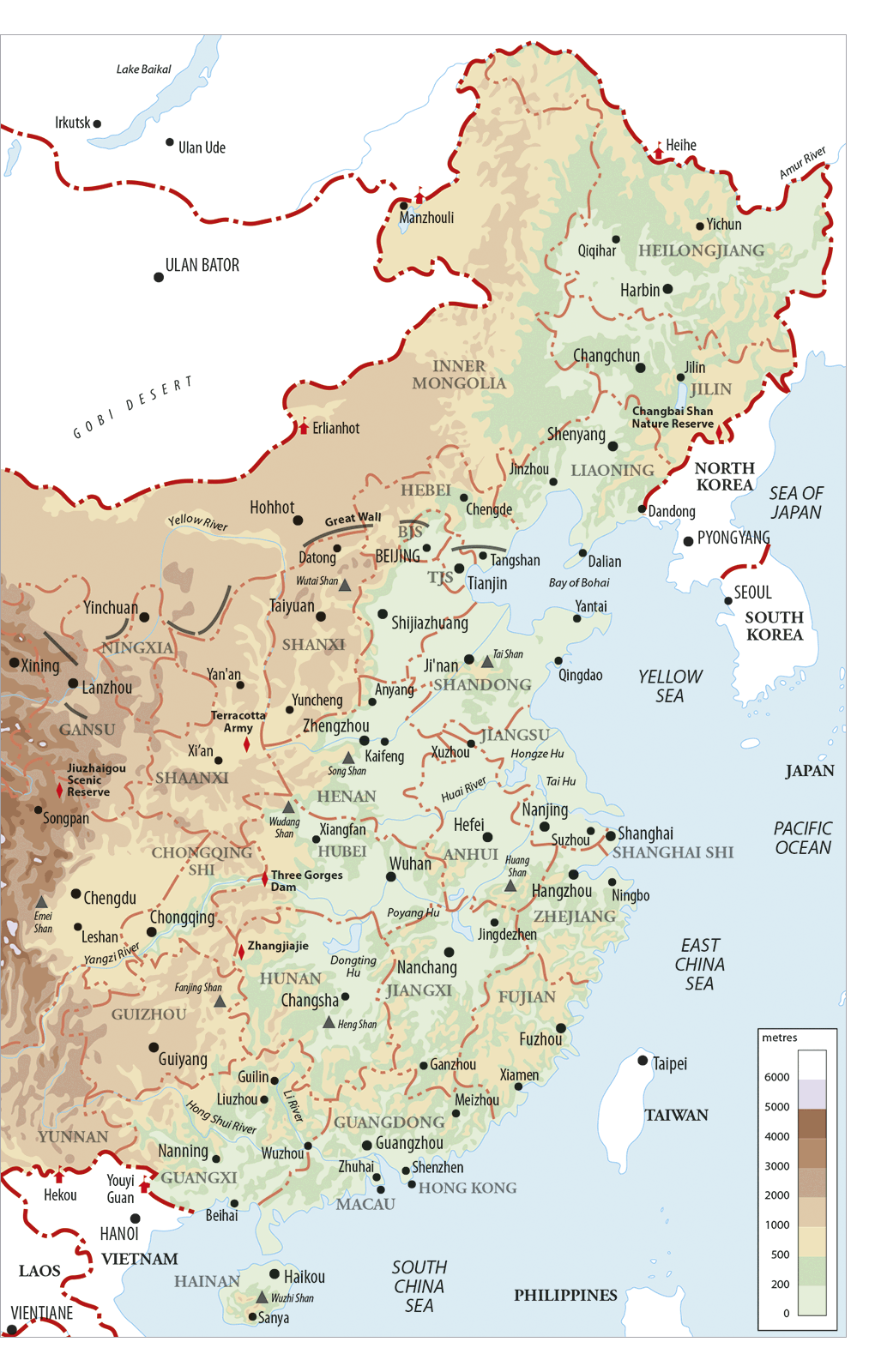
FACT FILE
- With an area of 9.6 million square kilometres, China is the fourth-largest country in the world and the most populous nation on earth, with around 1.35 billion people. Of these, 92 percent are of the Han ethnic group, with the remainder comprising about sixty minorities such as Mongols, Uyghurs and Tibetans.
- The main religions are Buddhism, Taoism and Christianity, though the country is officially atheist.
- China’s longest river is the Yangzi (6275km) and the highest peak is Qomolongma – Mount Everest (8850m) – on the Nepalese border.
- The Chinese Communist Party is the sole political organization, and is divided into Executive, Legislative and Judicial branches. The chief of state (President) and the head of government (Premier) are elected for five-year terms at the National People’s Congress.
- After decades of state planning, the economy is now mixed, with nationally owned enterprises on the decline and free-market principles ubiquitous.
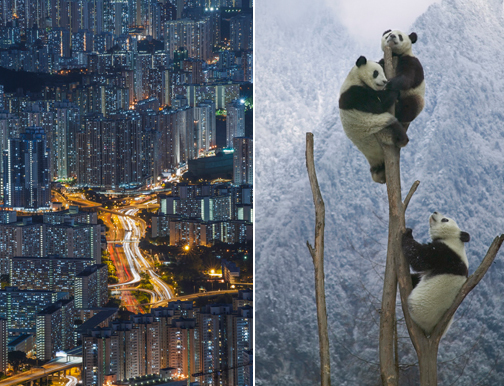
FROM LEFT HONG KONG; GIANT PANDAS, SICHUAN
Where to go
As China has opened up in recent years, so the emphasis on tourism has changed. Many well-known cities and sights have become so developed that their charm has vanished, while in remoter regions – particularly Tibet, Yunnan and the northwest – previously restricted or "undiscovered" places have become newly accessible. The following outline is a selection of both "classic" China sights and less-known attractions, which should come in handy when planning a schedule.
Inevitably, Beijing is on everyone’s itinerary, and the Great Wall and the splendour of the Forbidden City are certainly not to be missed; the capital also offers some of the country’s best food and nightlife. Chengde, too, just north of Beijing, has some stunning imperial buildings, constructed by emperors when this was their favoured retreat for the summer.
South of the capital, the Yellow River valley is the cradle of Chinese civilization, where remnants of the dynastic age lie scattered in a unique landscape of loess terraces. The cave temples at Datong and Luoyang are magnificent, with huge Buddhist sculptures staring out impassively across their now industrialized settings. Of the historic capitals, Xi’an is the most obvious destination, where the celebrated Terracotta Army still stands guard over the tomb of Emperor Qin Shi Huang. Other ancient towns include sleepy Kaifeng in Henan, and Qufu, the birthplace of Confucius, in Shandong, both offering architectural treasures and an intimate, human scale that’s missing in the large cities. The area is also well supplied with holy mountains, providing both beautiful scenery and a rare continuity with the past: Tai Shan is perhaps the grandest and most imperial of the country’s pilgrimage sites; Song Shan in Henan sees followers of the contemporary kung fu craze making the trek to the Shaolin Temple, where the art originated; and Wutai Shan in Shanxi features some of the best-preserved religious sites in the country.
Dominating China’s east coast near the mouth of the Yangzi, Shanghai is the mainland’s most Westernized city, a booming port where the Art Deco monuments of the old European-built Bund – the riverside business centre – rub shoulders with a hyper-modern metropolis, crowned with two of the world’s tallest skyscrapers. It’s interesting to contrast Shanghai’s cityscape with that of rival business hub Hong Kong, off China’s south coast. With its colonial heritage and refreshingly cosmopolitan outlook, there’s almost nothing Hong Kong cannot offer in the way of tourist facilities, from fine beaches to great eating, drinking and nightlife. Nearby Macau is also worth a visit, if not for its casinos then for its Baroque churches and Portuguese cuisine.
In the southwest of the country, Sichuan’s Chengdu and Yunnan’s Kunming remain two of China’s most easy-going provincial capitals, and the entire region is, by any standards, exceptionally diverse, with landscapes encompassing everything from snowbound summits and alpine lakes to steamy tropical jungles. The karst (limestone peak) scenery is particularly renowned, especially along the Li River between Yangshuo and Guilin in Guangxi. In Sichuan, pilgrims flock to see the colossal Great Buddha at Leshan, and to ascend the holy mountain of Emei Shan; to the east, the city of Chongqing marks the start of river trips down the Yangzi, Asia’s longest river, through the Three Gorges. As Yunnan and Guangxi share borders with Vietnam, Laos and Burma, while Sichuan rubs up against Tibet, it’s not surprising to find that the region is home to near-extinct wildlife and dozens of ethnic autonomous regions. The attractions of the latter range from the traditional Bai town of Dali, the Naxi town of Lijiang and the Dai villages of Xishuangbanna in Yunnan, to the Khampa heartlands of western Sichuan, the exuberant festivals and textiles of Guizhou’s Miao and the wooden architecture of Dong settlements in Guangxi’s north.
The huge area of China referred to as the Northwest is where the people thin out and real wilderness begins. Inner Mongolia, just hours from Beijing, is already at the frontiers of Central Asia; here you can follow in the footsteps of Genghis Khan by going horseriding on the endless grasslands of the steppe. To the south and west, the old Silk Road heads out of Xi’an right to and through China’s western borders, via Jiayuguan, terminus of the Great Wall of China, and the lavish Buddhist cave art in the sandy deserts of Dunhuang.
West of here lie the mountains and deserts of vast Xinjiang, where China blends into old Turkestan and where simple journeys between towns become modern travel epics. The oasis cities of Turpan and Kashgar, with their bazaars and Muslim heritage, are the main attractions, though the blue waters of Tian Chi, offering alpine scenery in the midst of searing desert, are deservedly popular. Beyond Kashgar, travellers face some of the most adventurous routes of all, over the Khunjerab and Torugut passes to Pakistan and Kyrgyzstan respectively.
Tibet remains an exotic destination, especially if you come across the border from Nepal or brave the long road in from Golmud in Qinghai province. Despite fifty years of Chinese rule, coupled with a mass migration of Han Chinese into the region, the manifestations of Tibetan culture remain intact – the Potala Palace in Lhasa, red-robed monks, lines of pilgrims turning prayer wheels, butter sculptures and gory frescoes decorating monastery halls. And Tibet’s mountain scenery, which includes Mount Everest, is worth the trip in itself, even if opportunities for independent travel are more restricted than elsewhere in China.
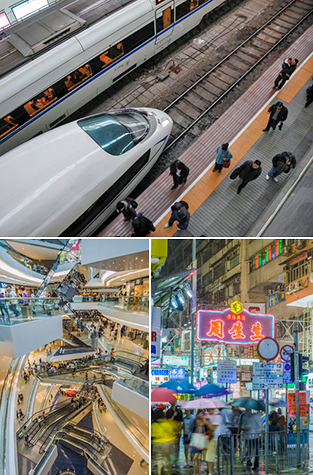
CLOCKWISE FROM TOP HIGH-SPEED TRAIN; KOWLOON STREET; MODERN SHOPPING MALL
MARTIAL ARTS
Thousands of martial arts have evolved in China, usually in isolated communities that had to defend themselves, such as temples and clan villages. All, though, can be classed into two basic types: external, or hard, styles concentrate on building up physical strength to overpower opponents; the trickier internal, or soft, styles concentrate on developing and focusing the internal energy known as qi. Both styles use forms – prearranged sets of movements – to develop the necessary speed, power and timing; as well as kicks, punches and open palm strikes, they also incorporate movements inspired by animals.
The most famous external style is Shaolin kung fu, developed in the Shaolin Temple in Henan province and known for powerful kicks and animal styles – notably eagle, mantis and monkey. The classic Shaolin weapon is the staff, and there’s even a drunken form, where the practitoner sways and lurches as if inebriated.
But the style that you’re most likely to see – it’s practised in the open air all over the country – is the internal tai ji quan. The body is held in a state of minimal tension to create the art’s characteristic "soft" appearance. Its emphasis on slow movements and increasing qi flow means it is excellent for health, and it’s a popular workout for the elderly.
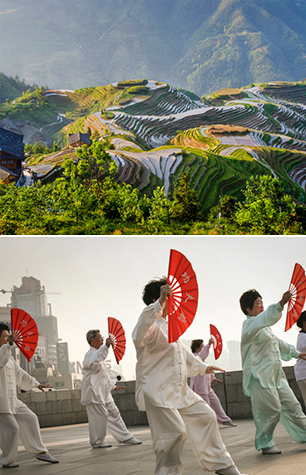
FROM TOP DRAGON BACKBONE RICE TERRACES; TAIJI ON THE BUND SHANGHAI
When to go
China’s climate is extremely diverse. The south is subtropical, with wet, humid summers (April–Sept), when temperatures can approach 40°C, and a typhoon season on the southeast coast between July and September. Though it is often still hot enough to swim in the sea in December, the short winters (Jan–March) can be surprisingly chilly.
Central China has brief, cold winters, with temperatures dipping below zero, and long, hot, humid summers: the three Yangzi cities – Chongqing, Wuhan and Nanjing – are proverbially referred to as China’s three "furnaces". Rainfall here is high all year round. The Yellow River basin marks a rough boundary beyond which central heating is fitted as standard in buildings, helping to make the region’s harsh winters a little more tolerable. Winter temperatures in Beijing rarely rise above freezing from December to March, and biting winds off the Mongolian plains add a vicious wind-chill factor, yet summers can be well over 30°C. In Inner Mongolia and Dongbei, winters are at least clear and dry, but temperatures remain way below zero, while summers can be uncomfortably warm. Xinjiang gets fiercely hot in summer, though without the humidity of the rest of the country, and winters are as bitter as anywhere else in northern China. Tibet is ideal in midsummer, when its mountain plateaus are pleasantly warm and dry; in winter, however, temperatures in the capital, Lhasa, frequently fall below freezing.
Overall, the best time to visit China is spring or autumn, when the weather is at its most temperate.
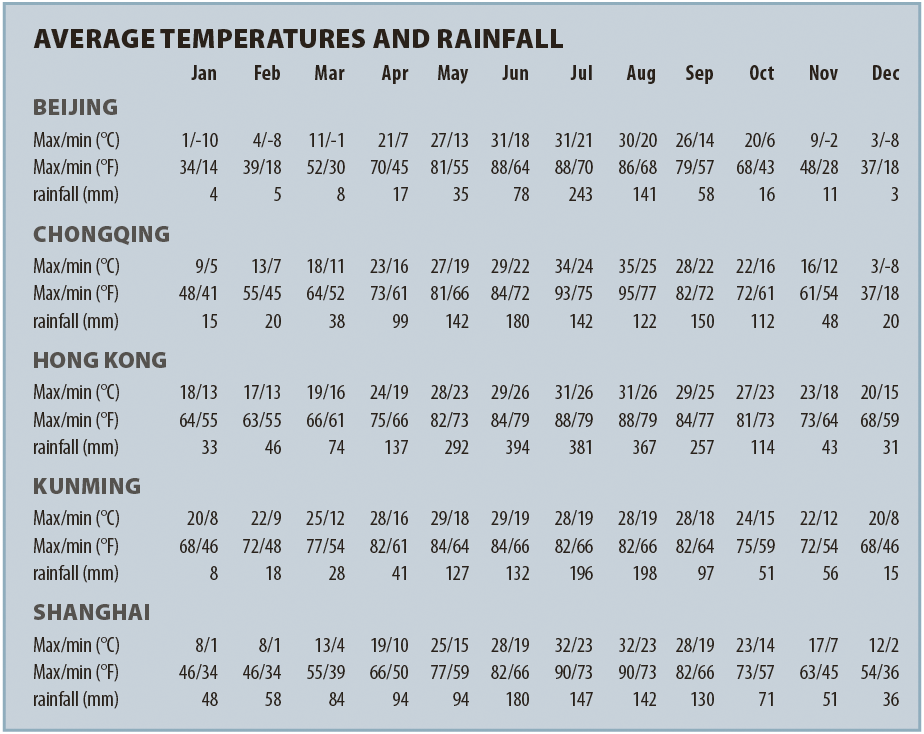
AUTHOR PICKS
Our authors spent eight months researching every corner of China, from sprawling Mongolian grasslands to city nightclubs, Tibet’s awe-inspiring mountains and Beijing’s maze of hutongs. These destinations are some of their personal favourites.
High-tech cityscapes: For superlative views of electrifying urban architecture, head to the Peak in Hong Kong or Shanghai’s Financial Centre – preferably at night – and gaze down across forests of luminous, futuristic towers.
Ethnic minorities: Experience China’s cultural diversity among Miao hamlets, Tibetan monastery towns, Dai and Bai villages, Uyghur mosques (see Id Kah Mosque) and Mongolian nomad tents.
Epic scenery: Drink in dramatic landscapes at Lake Karakul, its fridgid shores grazed by bactrian camels; Zhangjiajie’s spectacular forest of splintered stone pinnacles, wreathed in cloud; and the grandeur of Meili Xue Shan’s frosted summit.
Chinese cuisine: Indulge yourself with a crispy, calorie-laden Peking duck in Beijing, a simple bowl of beef noodles in Lanzhou, a bright and noisy dim sum breakfast in Hong Kong, or one of Sichuan’s scorching, chilli-laden hotpots.
Top hikes: Wear out your hiking shoes on a two-day trail through Tiger Leaping Gorge; the 65km-long staircase to the summit of Emei Shan; or a two-hour leg stretch along Hong Kong’s Dragon’s Back path.
Traditional architecture: Explore the medieval walled town of Pingyao, Jokhang Tibetan temple, domestic buildings at Yixian, Dong drum towers at Zhaoxing, and Zigong’s merchant guildhalls.
Vanished cultures: The country’s inhospitable, far western fringes hide remains of long-forgotten civilizations: Tibet’s all-but-unheard-of Guge Kingdom; and the haystack-shaped mausoleums of Ningxia’s Western Xia rulers.
Our author recommendations don’t end
here. We’ve flagged up our favourite places – a perfectly sited hotel, an
atmospheric café, a special restaurant – throughout the guide, highlighted with the
 symbol.
symbol.
31 THINGS NOT TO MISS
It’s not possible to see everything that China has to offer in one trip – and we don’t suggest you try. What follows, in no particular order, is a selective taste of the country’s highlights: stunning scenery, distinctive cuisine, exuberant festivals and monumental architecture. All highlights have a reference to take you straight into the Guide, where you can find out more.
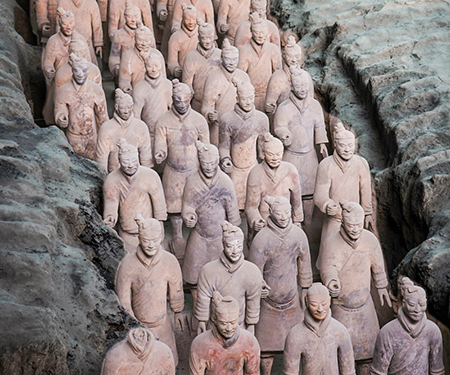
1 Terracotta Army, Xi’an These 2200-year-old, life-sized warriors protect the tomb of China’s first emperor.
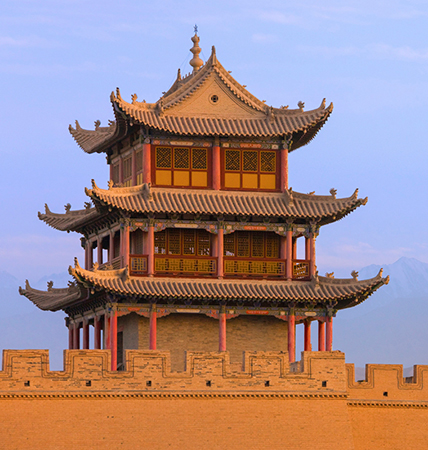
2 Jiayuguan Fort, Gansu Famously lonely desert outpost, guarding the remote western tail end of the Great Wall.
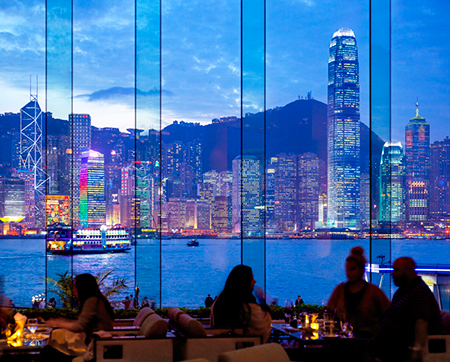
3 Central’s skyline, Hong Kong Indulge in afternoon tea while admiring one of the world’s most spectacular cityscapes.
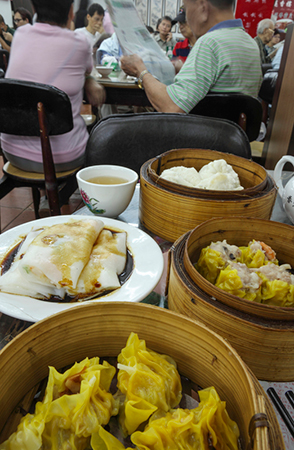
4 Dim sum The classic Cantonese breakfast; there’s no better place to try it than in Gaungzhou.
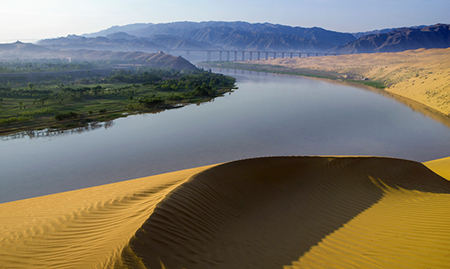
5 The Yellow River at Shapotou Witness how "China’s Sorrow", the mighty Yellow River, is being used to re-vegetate desert dunes.
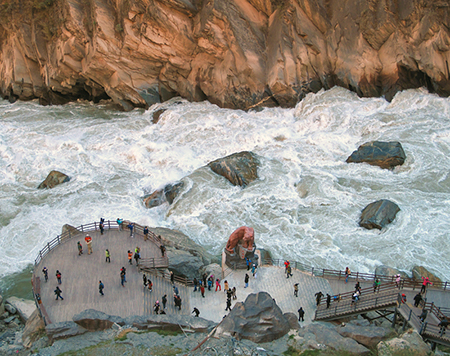
6 Tiger Leaping Gorge, Yunnan One of China’s great hikes, along a steep-sided canyon, with attractive homestays along the way.
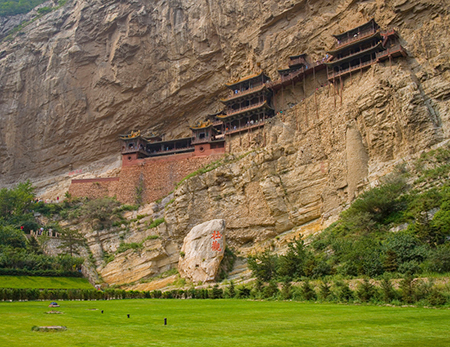
7 Hanging Temple, Heng Shan Rickety wooden shrines to China’s three main faiths, suspended on a cliff-face by flimsy-looking scaffolding.
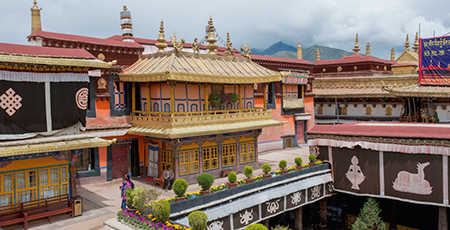
8 The Jokhang, Lhasa Stuffed with gorgeous statuary and wreathed in juniper smoke, this is Tibet’s holiest temple.
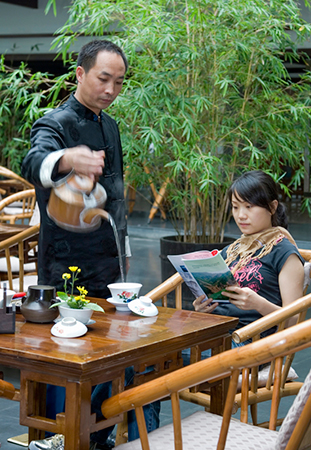
9 Taking tea, Sichuan Offering unlimited refills, Sichuanese teahouses make relaxed places to drink, socialize, read or gossip.
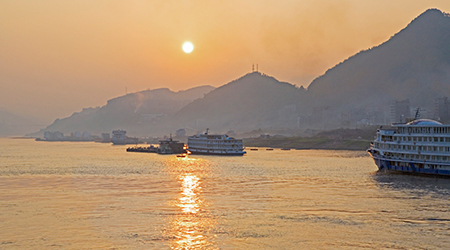
10 Cruise ships, Yangzi River Enjoy awesome scenery and intriguing history in a journey through China’s dramatic Three Gorges.
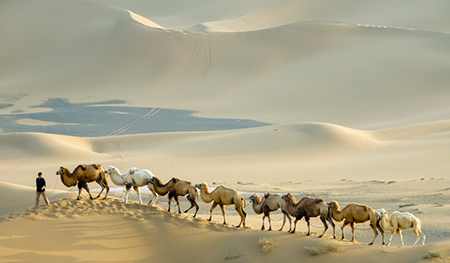
11 Camel Train, Xinjiang The ghost of the legendary Silk Road is still dotted with oasis towns and abandoned cities.
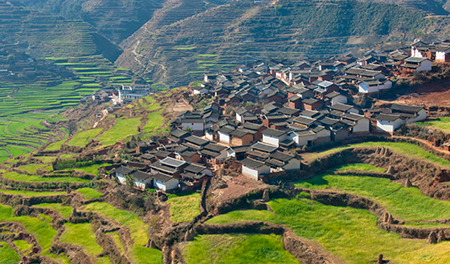
12 Minority villages, Yunnan Bordering Laos, Burma and Vietnam, Yunnan’s 28 recognized ethnic groups enjoy distinct cultures and lifestyles.
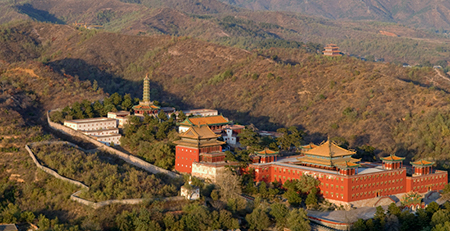
13 Chengde The former imperial retreat from the heat of summer holds a string of pretty temples.
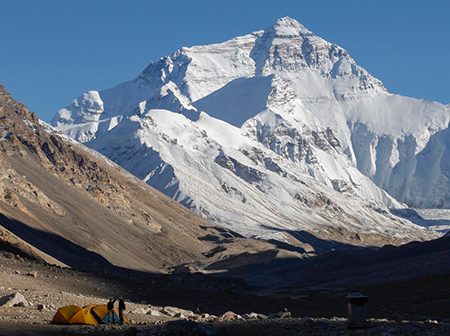
14 Mount Everest, Tibet The sight of the world’s highest peak towering overhead rewards the arduous trip to Base Camp.
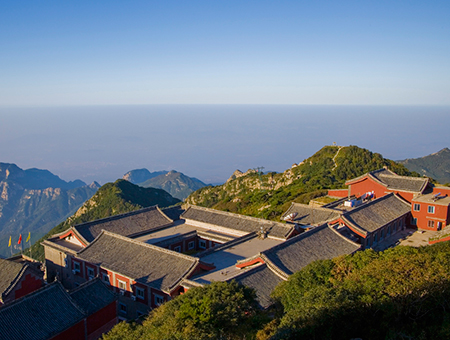
15 Tai Shan, Shandong A taxing ascent up endless stone staircases is rewarded with some immaculate temples and pavilions.
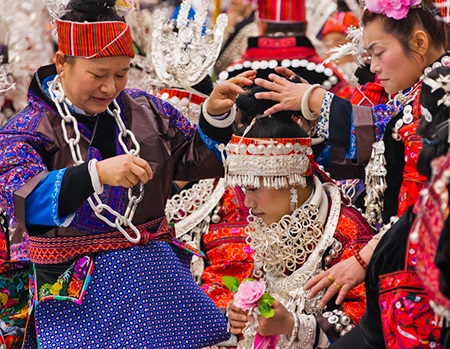
16 Sisters’ Meal festival Join thousands of locals at Taijiang, Guizhou, during a wild three-day showcase of ethnic Miao culture.
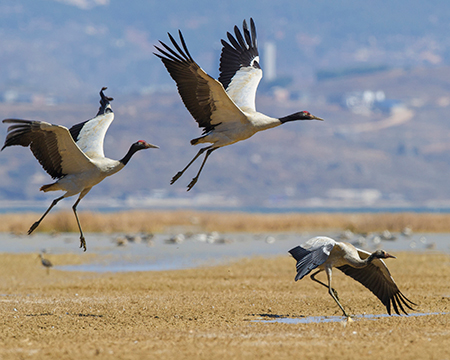
17 Black-necked cranes, Caohai Spend a relaxing day being punted around this shallow lake in search of rare birdlife.
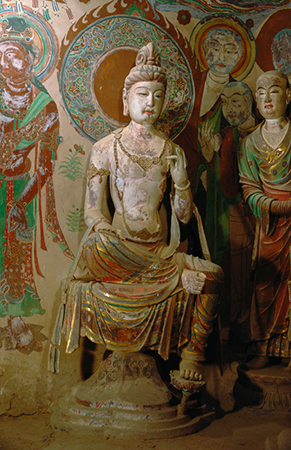
18 Mogao Caves, Gansu Roam millennia-old grottoes, packed with beautiful Buddhist sculptures, at this former Silk Road pilgrimage site.

19 Confucius Temple, Qufu This lavish complex at Confucius’s home town shows the esteem in which China’s great sage was held.
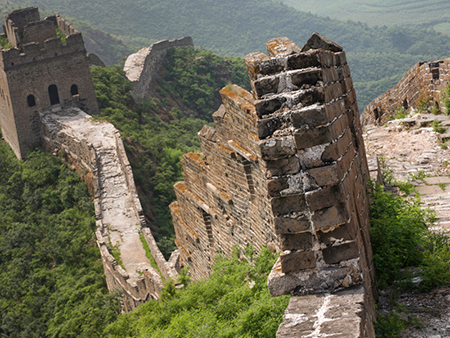
20 The Great Wall Hike along unrestored sections of this monumental barrier, which once protected China from the outside world.
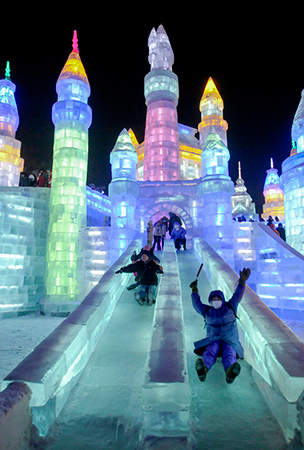
21 Harbin Ice Festival Enjoy a fantastical array of hand-carved tableaux – including full-sized castles – all luridly illuminated from within.
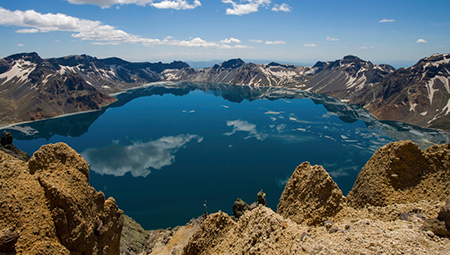
22 Changbai Shan Nature Reserve Remote wilderness whose stunning highlight is the view over Tian Chi, "Heaven’s Lake", into North Korea.
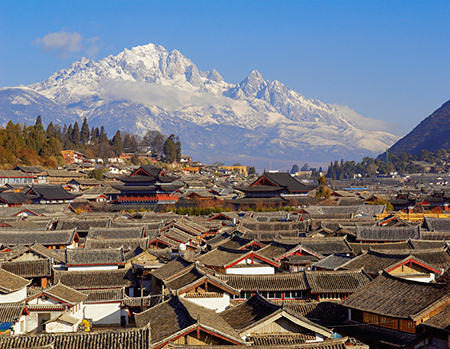
23 Lijiang, Yunnan Attractive ancient town, now a lively tourist fairground of cobbled lanes and rustic wooden houses.
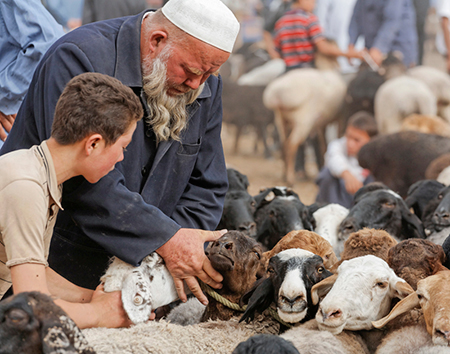
24 Kashgar’s Sunday market Watch Central Asian crowds trading in livestock, carpets and knives at Xinjiang’s premier frontier bazaar.

25 Forbidden City, Beijing Once the sole preserves of emperors, the centre of the Chinese imperial universe is now open to all.
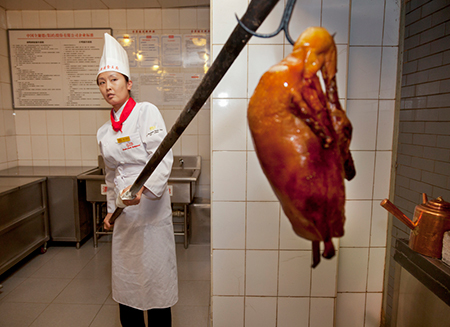
26 Peking duck Tuck into this delicious northern Chinese speciality – all crispy skin and juicy meat, eaten in a pancake.
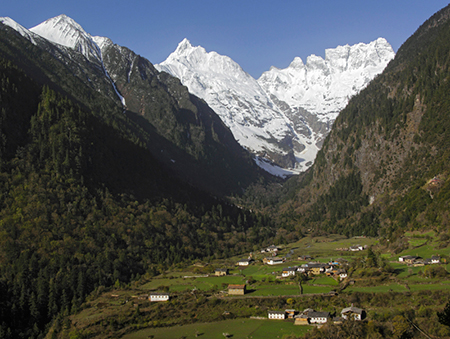
27 Meili Xue Shan A wilderness area in northwestern Yunnan, holy to Tibetans, which offers superlative hiking and staggering scenery.
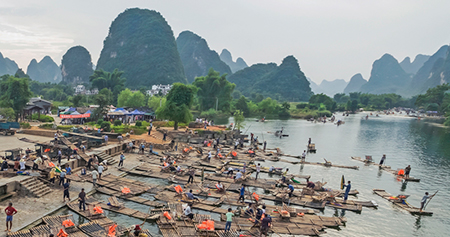
28 Li River scenery Ride a boat or a bamboo raft through the heart of this weird, poetical landscape, past a host of contorted limestone pinnacles.
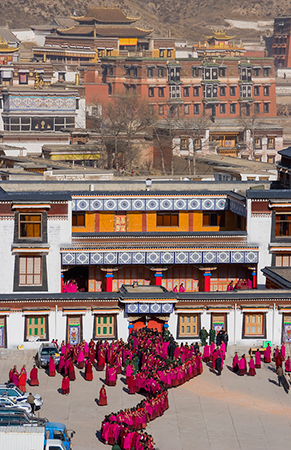
29 Labrang Monastery, Xiahe Rub shoulders with pilgrims and red-robed clergy at this enormous complex, one of the pivots of Tibetan Lamaism.
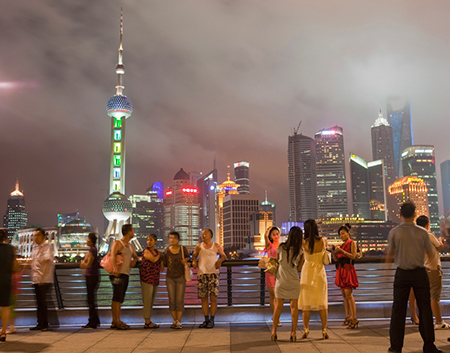
30 The Bund, Shanghai Watch Chinese holidaymakers queuing up to have their photos taken against Shanghai’s luminous, futuristic skyline.
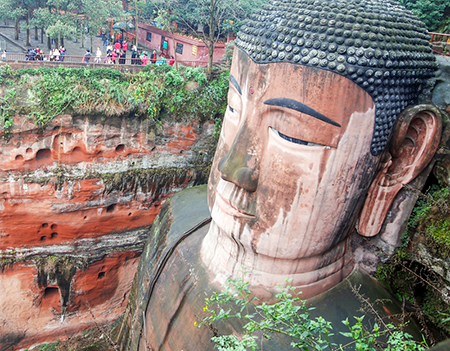
31 Giant Buddha, Leshan Marvel at the world’s largest carved Buddha, hewn into a riverside cliff way back during the Tang dynasty.

LEFT PINGYAO, SHANXI; STEAMED BUNS FOR SALE
ITINERARIES
China is vast, and you’ll barely be able to scratch the surface on a single trip. The following itineraries will, however, give you an in-depth look at some of the country’s most fascinating areas – the Grand Tour covers the essentials, while the other suggested routes cover the trip to the deserts of the west, and China’s tropical southwestern corner.
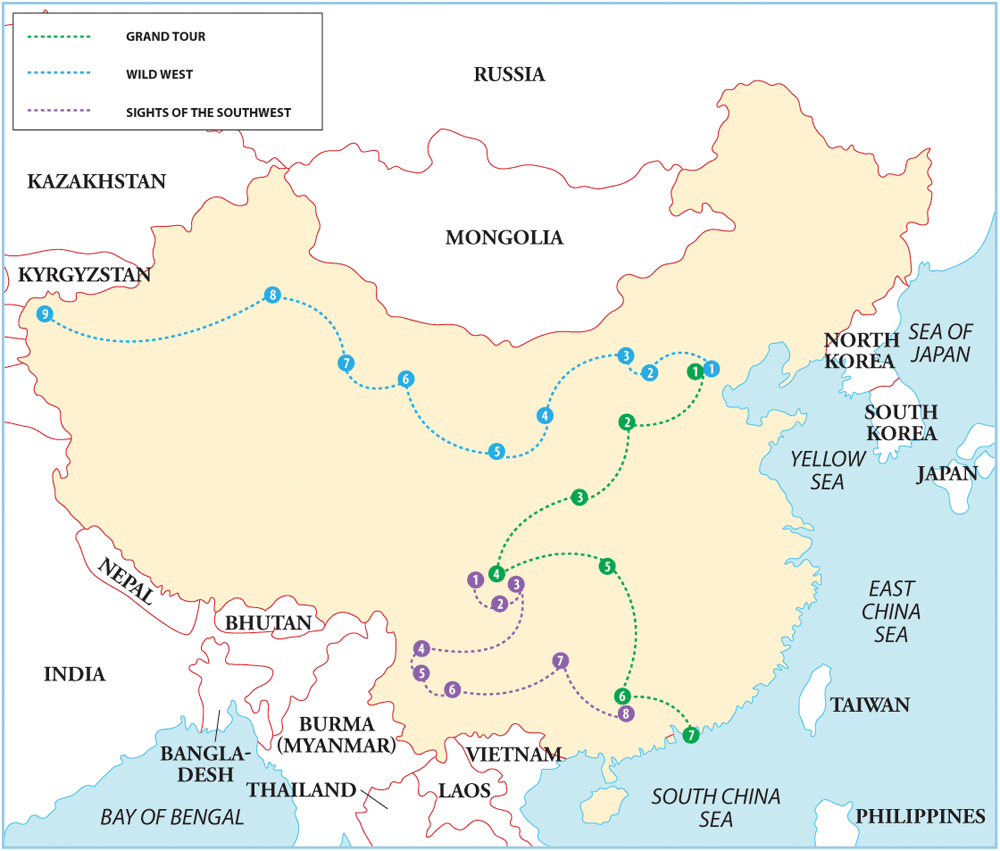
GRAND TOUR
This tour ticks the major boxes – historical sights, gorgeous countryside and sizzling cities. Allow two weeks in a hurry, or three at a more leisurely pace.
1 Beijing The Chinese capital is packed with essential sights, including the Forbidden City, the Summer Palace and the Great Wall.
2 Pingyao Step back in time inside the walls of this charming, traffic-free Ming-dynasty town, spending the night at a traditional courtyard inn.
3 Xi’an Dynastic capital for a millennium, Xi’an is filled with treasures, including the enigmatic Terracotta Army, built to guard the tomb of China’s despotic first emperor.
4 Chengdu The Sichuanese capital features traditional teahouses, fire-breathing opera, lively temples and locally bred pandas.
5 Three Gorges Take a three-day cruise down this impressive stretch of the mighty Yangtze River, between Chongqing and the massive Three Gorges Dam.
6 Yangshuo Cycle between jagged limestone peaks and brilliant green paddy fields surrounding Yangshuo village, looking like something straight off a Chinese scroll painting.
7 Hong Kong Stunning cityscapes, modern conveniences, serious shopping, glorious beaches, wonderful mountain trails and superb cuisine – this bustling territory has it all.
WILD WEST
This three-week-long trip takes you from Beijing to China’s Wild West, where you can ride horses across Mongolian grasslands, or soak up Uyghur culture in Xinjiang.
1 Beijing Before setting out, get a taster of northwestern China in Beijing’s Muslim quarter, where street hawkers sell delicious skewers of barbecued lamb.
2 Datong Cycle around Datong’s rebuilt city walls, then bus out to giant Buddhist sculptures at the Yungang caves, and the gravity-defying Hanging Temple.
3 Grasslands Use pleasant Hohhot, the capital of Inner Mongolia, for exploring the never-ending grasslands to the north, galloping across the plains on a tiny steed.
4 Shapotou See the mighty Yellow River flowing smoothly between desert dunes at this tiny, remote resort town in up-country rural Ningxia – a spellbinding sight.
5 Lanzhou Slurp down outstanding beef noodles at this former garrison town along the fabled Silk Road, the gateway to China’s Muslim northwest.
6 Jiayuguan The fortress at the Great Wall’s western extremity, over 2000km from Beijing, impressive for its mighty defences yet dwarfed by the stark desert scenery.
7 Dunhuang Ride a camel across 300m-high dunes outside this small city, then explore the marvellous galleries of ancient Buddhist sculptures at the Mogao caves.
8 Turpan Small, relaxed oasis town, with a main street shaded by grape trellises and a surrounding desert packed with historical relics from its former Silk Road heyday.
9 Kashgar Frontier city where Chinese, Uyghur and Central Asian cultures mix: don’t miss the astonishing Sunday Bazaar, crammed with metalwork, spices and livestock traders.
SIGHTS OF THE SOUTHWEST
The southwestern provinces offer spellbinding mountain vistas, karst-dotted rivers and rushing waterfalls, alongside fascinating minority villages and laidback cities.
1 Emei Shan Join Buddhist pilgrims ascending this forested, temple-studded mountain up seemingly endless flights of stone steps.
2 Dafo This gigantic Buddha statue was completed in 803 AD and remains one of the world’s biggest religious sculptures.
3 Jiuzhaigou Enchanting alpine valley of calcified waterfalls and stunningly blue lakes, all surrounded by magestically forested peaks – get in early to beat the crowds.
4 Lijiang Exploring the rambling, cobbled lanes of this picturesque ancient town – once home to the Naxi minority, now crammed with sightseers – makes for an atmospheric few days.
5 Dali Dali’s laidback street life and outlying minority villages encourage unplanned long stays.
6 Kunming The cheery, pleasantly warm Yunnanese capital retains considerable charm despite its modernity. Don’t forget to try the famous "Crossing-the-Bridge" noodles.
7 Kaili Jumping-off point for visiting villages of the Miao minority, famed for their festivals and spectacular embroideries.
8 Li River Ride a boat down this magical river, lined with karst pinnacles, between Guilin and Yangshuo.
